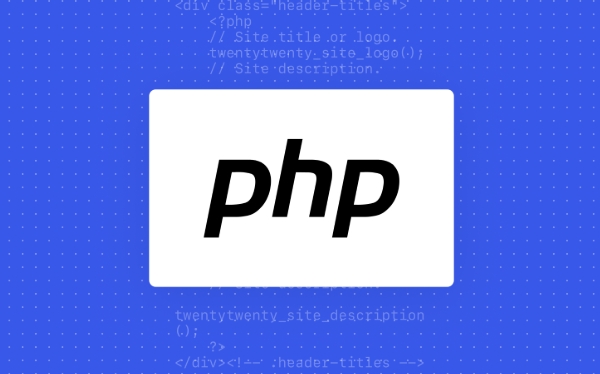Phalcon is the fastest PHP framework, followed by Laminas and Slim. Phalcon compiles in C extensions, with the highest performance; Laminas enables lightweight and flexibility by loading components on demand; Slim is suitable for building small APIs and services; while Laravel is not the fastest, its rich functionality and ease of use make it efficient and practical enough in most projects.

When it comes to speed, PHP frameworks vary a lot depending on what you're building and how you use them. If you want raw performance with minimal overhead, Laminas (formerly Zend Framework) and Phalcon stand out — especially Phalcon, which is built as a C extension and runs super fast. But speed isn't everything — simplicity, ease of use, and development efficiency also matter.

Lightweight and Fast: Laminas and Phalcon
If you're chasing pure performance, Laminas and Phalcon are your best bets. Laminas is known for being flexible and powerful while still keeping things pretty lean if you use only the components you need. It's not a full-stack framework by default, so you can pick and choose what to include, which helps keep things fast.

Phalcon , on the other hand, is unique because it's compiled as a PHP extension written in C. That means it runs directly inside the PHP kernel without needing extra layers or interpretation at runtime. This makes it incredibly fast out of the box. You don't get as much built-in scaffolding as Laravel, but that's part of why it's so quick.
- Laminas: modular, reusable components
- Phalcon: compiled, low memory usage, high performance
Both are great choices when speed is critical, but Phalcon edges ahead in benchmarks.

Laravel Isn't the Fastest, But Still Good Enough for Most Projects
Let's be honest — Laravel isn't the fastest PHP framework around. It has a lot of features, abstractions, and layers that make development easier but add some overhead. However, for most real-world applications, the difference in speed between Laravel and something like Phalcon is negligible unless you're handling millions of requests per day.
That said, Laravel makes up for it with developer happiness, clean syntax, and a huge ecosystem. If you're building something where development speed matters more than microsecond-level performance, Laravel is still a solid choice.
- Easier to learn and use than Phalcon
- Built-in tools for auth, routing, ORM, queues, etc.
- Performance can be improved with caching and tuning
So while Laravel might not win any speed contests, it's still plenty fast for most use cases — especially when paired with tools like Redis or OPcache.
Micro-Frameworks Like Slim Are Great for APIs and Small Apps
If you're building something lightweight like a REST API or a small service, a micro-framework like Slim could be perfect. These frameworks strip away almost all overhead and give you just the essentials: routing, middleware, and maybe dependency injection.
They're not mean for large apps with lots of business logic, but they shine in scenarios where you want to process HTTP requests quickly and efficiently.
- Very low overhead
- Easy to set up for simple endpoints
- Good for JSON APIs or microservices
Slim, in particular, is well-documented and actively maintained. If your app doesn't need database migrations, queue workers, or complex routing, this is a great option.
Speed ??matters, but it's not the only factor. For most developers, choosing the right tool depends on the project type, team familiarity, and long-term maintenance. If you really care about performance, go with Phalcon. If you want balance and productivity, Laravel still works well. And for tiny services or APIs, Slim or similar micro-frameworks are hard to beat.
Basically that's it.
The above is the detailed content of which php framework is the fastest. For more information, please follow other related articles on the PHP Chinese website!

Hot AI Tools

Undress AI Tool
Undress images for free

Undresser.AI Undress
AI-powered app for creating realistic nude photos

AI Clothes Remover
Online AI tool for removing clothes from photos.

Clothoff.io
AI clothes remover

Video Face Swap
Swap faces in any video effortlessly with our completely free AI face swap tool!

Hot Article

Hot Tools

Notepad++7.3.1
Easy-to-use and free code editor

SublimeText3 Chinese version
Chinese version, very easy to use

Zend Studio 13.0.1
Powerful PHP integrated development environment

Dreamweaver CS6
Visual web development tools

SublimeText3 Mac version
God-level code editing software (SublimeText3)

Hot Topics
 How to combine two php arrays unique values?
Jul 02, 2025 pm 05:18 PM
How to combine two php arrays unique values?
Jul 02, 2025 pm 05:18 PM
To merge two PHP arrays and keep unique values, there are two main methods. 1. For index arrays or only deduplication, use array_merge and array_unique combinations: first merge array_merge($array1,$array2) and then use array_unique() to deduplicate them to finally get a new array containing all unique values; 2. For associative arrays and want to retain key-value pairs in the first array, use the operator: $result=$array1 $array2, which will ensure that the keys in the first array will not be overwritten by the second array. These two methods are applicable to different scenarios, depending on whether the key name is retained or only the focus is on
 php regex for password strength
Jul 03, 2025 am 10:33 AM
php regex for password strength
Jul 03, 2025 am 10:33 AM
To determine the strength of the password, it is necessary to combine regular and logical processing. The basic requirements include: 1. The length is no less than 8 digits; 2. At least containing lowercase letters, uppercase letters, and numbers; 3. Special character restrictions can be added; in terms of advanced aspects, continuous duplication of characters and incremental/decreasing sequences need to be avoided, which requires PHP function detection; at the same time, blacklists should be introduced to filter common weak passwords such as password and 123456; finally it is recommended to combine the zxcvbn library to improve the evaluation accuracy.
 How to handle File Uploads securely in PHP?
Jul 08, 2025 am 02:37 AM
How to handle File Uploads securely in PHP?
Jul 08, 2025 am 02:37 AM
To safely handle PHP file uploads, you need to verify the source and type, control the file name and path, set server restrictions, and process media files twice. 1. Verify the upload source to prevent CSRF through token and detect the real MIME type through finfo_file using whitelist control; 2. Rename the file to a random string and determine the extension to store it in a non-Web directory according to the detection type; 3. PHP configuration limits the upload size and temporary directory Nginx/Apache prohibits access to the upload directory; 4. The GD library resaves the pictures to clear potential malicious data.
 PHP Variable Scope Explained
Jul 17, 2025 am 04:16 AM
PHP Variable Scope Explained
Jul 17, 2025 am 04:16 AM
Common problems and solutions for PHP variable scope include: 1. The global variable cannot be accessed within the function, and it needs to be passed in using the global keyword or parameter; 2. The static variable is declared with static, and it is only initialized once and the value is maintained between multiple calls; 3. Hyperglobal variables such as $_GET and $_POST can be used directly in any scope, but you need to pay attention to safe filtering; 4. Anonymous functions need to introduce parent scope variables through the use keyword, and when modifying external variables, you need to pass a reference. Mastering these rules can help avoid errors and improve code stability.
 Commenting Out Code in PHP
Jul 18, 2025 am 04:57 AM
Commenting Out Code in PHP
Jul 18, 2025 am 04:57 AM
There are three common methods for PHP comment code: 1. Use // or # to block one line of code, and it is recommended to use //; 2. Use /.../ to wrap code blocks with multiple lines, which cannot be nested but can be crossed; 3. Combination skills comments such as using /if(){}/ to control logic blocks, or to improve efficiency with editor shortcut keys, you should pay attention to closing symbols and avoid nesting when using them.
 Tips for Writing PHP Comments
Jul 18, 2025 am 04:51 AM
Tips for Writing PHP Comments
Jul 18, 2025 am 04:51 AM
The key to writing PHP comments is to clarify the purpose and specifications. Comments should explain "why" rather than "what was done", avoiding redundancy or too simplicity. 1. Use a unified format, such as docblock (/*/) for class and method descriptions to improve readability and tool compatibility; 2. Emphasize the reasons behind the logic, such as why JS jumps need to be output manually; 3. Add an overview description before complex code, describe the process in steps, and help understand the overall idea; 4. Use TODO and FIXME rationally to mark to-do items and problems to facilitate subsequent tracking and collaboration. Good annotations can reduce communication costs and improve code maintenance efficiency.
 How Do Generators Work in PHP?
Jul 11, 2025 am 03:12 AM
How Do Generators Work in PHP?
Jul 11, 2025 am 03:12 AM
AgeneratorinPHPisamemory-efficientwaytoiterateoverlargedatasetsbyyieldingvaluesoneatatimeinsteadofreturningthemallatonce.1.Generatorsusetheyieldkeywordtoproducevaluesondemand,reducingmemoryusage.2.Theyareusefulforhandlingbigloops,readinglargefiles,or
 How to create an array in php?
Jul 02, 2025 pm 05:01 PM
How to create an array in php?
Jul 02, 2025 pm 05:01 PM
There are two ways to create an array in PHP: use the array() function or use brackets []. 1. Using the array() function is a traditional way, with good compatibility. Define index arrays such as $fruits=array("apple","banana","orange"), and associative arrays such as $user=array("name"=>"John","age"=>25); 2. Using [] is a simpler way to support since PHP5.4, such as $color






